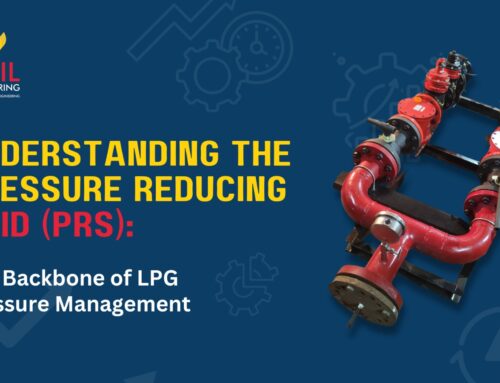This is a series of articles dedicated to explaining the terminology used in the field of LPG — Liquefied Petroleum Gas. Considering the hazardous nature of LPG, a clear understanding of some of the basics is imperative. This includes properties of LPG, their relevance/importance in actual application, and the terminology used in this industry to refer to anything, like – various equipment, parts, functions, processes, persons, etc. Every specification gives the terminology under “Definitions” to remove ambiguity. However, sometimes, it’s difficult to understand that definition because of a lack of clarity about the meaning of the words used therein and relevant physics theory.
Anybody in this field knows that LPG – Liquefied Petroleum Gas means Propane (C3H8 or popularly termed as C3), Butane (C4H10 or C4) or their mixture in various proportions with a minor content of propylene, butylene.
But what is petroleum? What is Gas? (silly question). What is Liquefied? If these questions arise in your mind, you are eager to learn things in depth. I appreciate your urge for knowledge.
Let’s start with these three words only.
Let’s start with that silly question—- What is gas?
As per the theory we learnt in physics, matter can exist in 3 states – Solid, Liquid, and Gaseous. These are also known as phases, and now, plasma is considered the fourth state.
The addition or removal of heat from matter changes its state or phase. Ice, water and steam are familiar examples.
Solid has a fixed shape and size. Liquid has a fixed size (volume) but shape changes with a container. Gas has no fixed size (Volume) or shape. It occupies the full volume of the container and naturally takes its form.
LPG always exists inside a container in liquid and vapour (Gaseous ) phases. Hence these two phases and the reasons for the change from one to another are of prime importance to us.
In a closed container, gas particles are free to go to any place inside the container. And as per physics theory, they are continuously moving. However, their free movement is restricted by the container walls. Hence they collide against the container wall, push the wall and exert pressure on the wall. Pressure is equal at any point on the wall and is always perpendicular to the wall.
The volume of gas is fixed in the closed container. If gas receives heat from container walls, gas particles get higher energy for movement and press harder against walls. That means gas is exerting higher pressure. That means any increase in temperature will increase gas pressure. Conversely, if heat is removed from the gas, the pressure reduces.
What is the difference between gas and liquid?
If we continue removing heat (cooling process), the gas will go to a liquid state.
That brings a question to your curious mind. What is the difference between gas and liquid?
Both can flow. Both acquire the shape of the container. Particles of both move continuously and are free to move to any place. But in the case of liquid, particles cannot cross the free surface of the liquid. So a container can be partially filled with liquid. But partial filling with gas is not possible.
A liquid container can be open to the atmosphere at the top. A gas container must be closed from all sides. And that too tightly, with no ‘Leakage path’. Otherwise, all gas will escape into the atmosphere. Allowing this to happen for LPG will be hazardous. No need to say that.
Liquid can flow through open channels; it can spread along a surface. Gas needs a closed channel (pipe/tube of any cross-sectional shape) for flowing; otherwise, it will get dispersed in the surrounding atmosphere. Therefore, all joints in the pipeline must be leak-tight.
As mentioned earlier, matter can exist in 3 phases (forget plasma for now). In which phase do we see various materials? All metals are solids. And many others, like wood, coal, (carbon), plastic, glass, etc. We live in an atmosphere having temperatures ranging from minus 10°C to 50°C (Beyond this limit in some places). As a general understanding, anything that is solid under all these temperature conditions, we say they are solid. Most oils, chemicals, mercury, water, etc., are liquids. Oxygen, nitrogen, hydrogen, chlorine, CO2, neon, argon, helium and many others are gases.
If any of this material is heated or cooled, it will change phase (I will prefer to use this term).
Keeping our focus on LPG, Propane, and Butane is more important to us. What phase are they in the abovementioned temperature range, and what happens in the range itself? And outside this range? When will their phase change? How will our appliance get affected?
These and many other questions should pop up in our curious minds now. And also the questions that popped up earlier. It is essential to have clarity about all this.
We will look at all that in the following article.
Thanks for reading.



